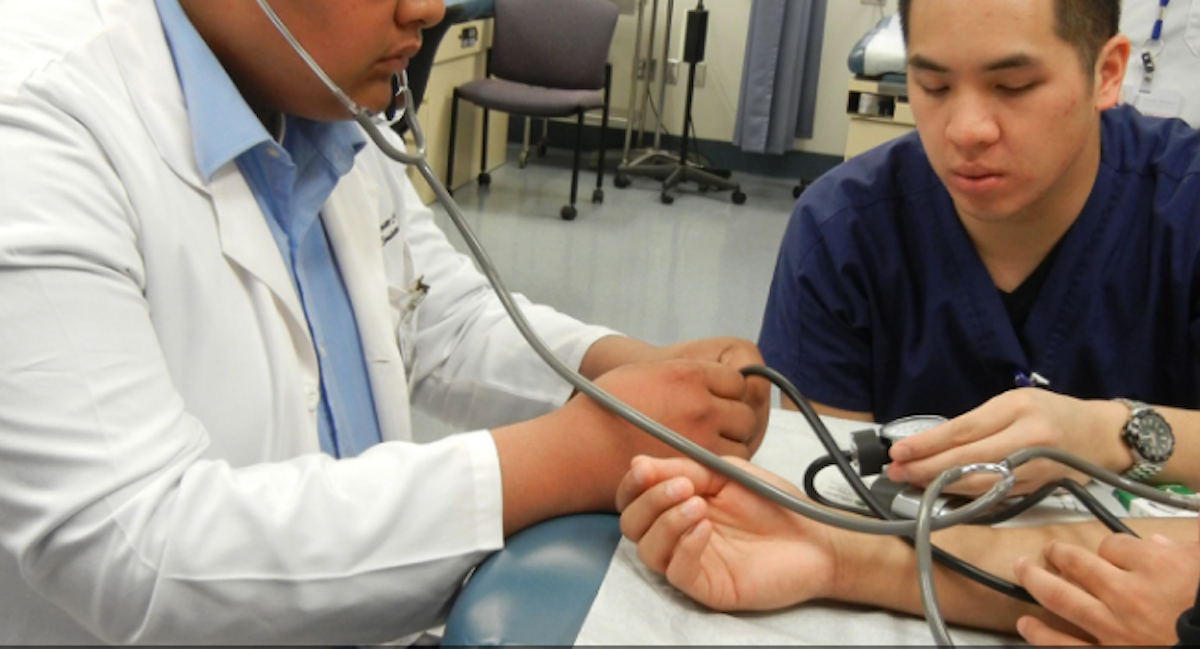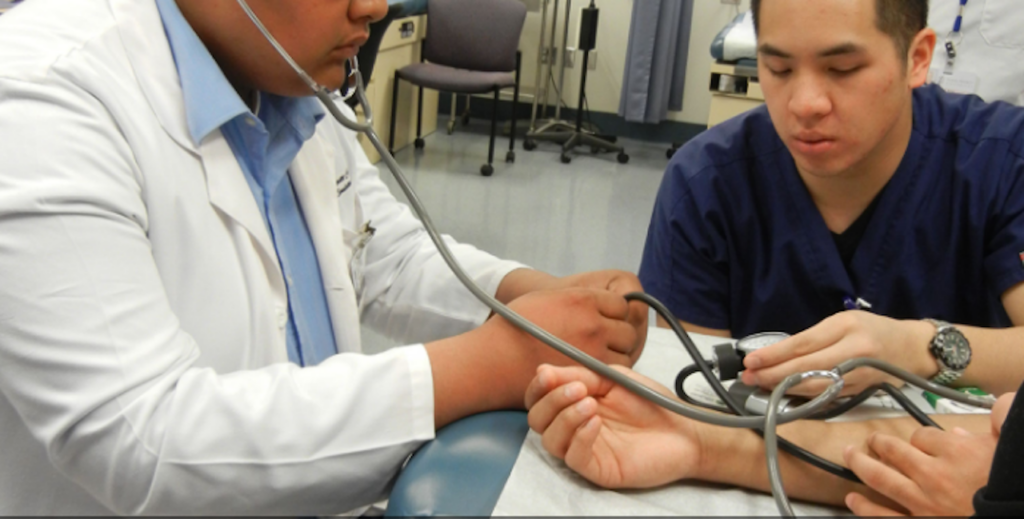Report: Linked learning programs lead to improved student outcomes
 Courtesy of Life Academy High School in Oakland
Courtesy of Life Academy High School in Oakland
 Courtesy of Life Academy High School in Oakland
Courtesy of Life Academy High School in Oakland
High school students in linked learning programs are more probable to earn a diploma and are better prepared for college and careers, a new independent evaluation of programs in ix California schoolhouse districts found.
Students in these programs, which integrate academics with real-globe work experiences, also on average earn more loftier school credits than peers in traditional programs, according to the evaluation by the inquiry grouping SRI International.
The evaluation is part of a vi-year study of districts participating in the California Linked Learning District Initiative, a collaborative created in 2009 to implement linked learning pathways.
The findings released earlier this week are consistent with previous years' results that showed students in linked learning pathways are more often than not more academically engaged, leading to increased success in school. Additionally, students coming into linked learning who had previously struggled academically are less probable to drib out, complete more higher prep courses, and have college GPAs than like students in traditional high school programs.
Linked learning pathways integrate academics with a career-related theme, such as business organisation or health care. Students in the programs typically remain together over several school years as they participate in work-based learning through internships at area businesses, or like piece of work experience.
The nine districts evaluated are Antioch Unified, Long Beach Unified, Los Angeles Unified, Montebello Unified, Oakland Unified, Pasadena Unified, Porterville Unified, Sacramento City, and West Contra Costa Unified. About 281,000 loftier school students are enrolled in these districts.
The evaluation concluded that compared to peers, students in linked learning:
- Accumulated 13.3 more credits – equivalent to 2.6 more courses – over the four years of loftier school;
- Were 3.7 percentage points more likely to earn a high school diploma;
- Were 5.3 percentage points more likely to be classified as ready or conditionally ready for college-level English subsequently taking the Early on Assessment Programme.
More than than 70 percent of students who started out in a pathway equally freshmen were still enrolled in the same pathway by the time they reached 11th grade.
"The multi-year evaluation shows that high quality linked learning is making a pregnant difference in educatee outcomes," Miya Warner, an instruction researcher at SRI International, said in a statement. "These data evidence the impressive gains linked learning has achieved beyond the state."
The evaluation, all the same, found that linked learning programs keep to struggle to retain special didactics students and English language learners, and college readiness in math did not improve for all student groups.
The California Linked Learning District Initiative is funded by the James Irvine Foundation, which also provides funding to EdSource. EdSource maintains sole editorial control over the content of its coverage.
To get more reports like this 1, click hither to sign upward for EdSource's no-cost daily e-mail on latest developments in education.
Source: https://edsource.org/2015/report-linked-learning-programs-lead-to-improved-student-outcomes/92262
0 Response to "Report: Linked learning programs lead to improved student outcomes"
Post a Comment